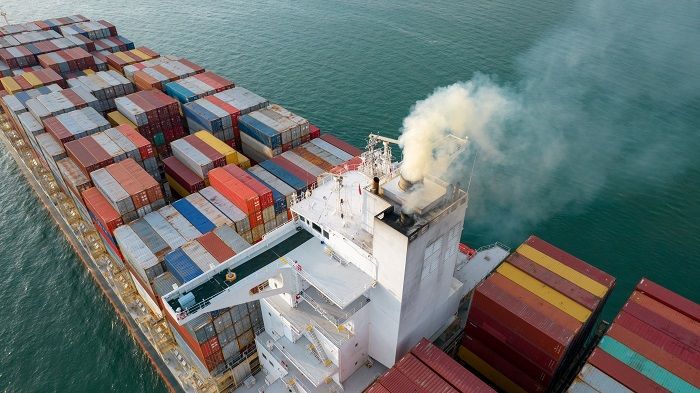Ship-based carbon capture (SBCC) is one of the most-high impact trends in the maritime industry for 2024, with the greatest potential to help decarbonize the sector as it can capture up to 90% of carbon dioxide emissions from a ship, according to a report by the world’s biggest reinsurance company, Munich RE.
About SBCC
SBCC captures the carbon in a ship’s fuel before it is emitted into the atmosphere through the exhaust, and the process falls under the greater umbrella of CCUS, which is the process of capturing, utilizing and storing carbon dioxide that is intended to help protect the climate.
The Intergovernmental Panel on Climate Change (IPCC) has said CCUS will be essential to achieve the world’s net-zero targets and a McKinsey report estimates that annual investments in CCUS could hit $175 billion by 2035, due to the market’s support for it as a key tool for decarbonization.
SBCC is dependent upon modifications being made to ships including on-board CO2 storage and a value chain for the permanent storage of CO2 away from the atmosphere.
Challenges and Opportunities
Munich RE highlights that, as with the roll-out of any new technology, there are challenges and opportunities for the market around SBCC.
Some of the greatest problems include: “The cost of implementing SBCC and the lack of financial incentives for shipping companies to invest in it, uncertainty and a lack of standards for CCUS technology in the maritime industry, the challenge of ensuring consistent global regulations and standards for CCUS technology […] the need for further collective agreement and ambition among stakeholders in the maritime industry, and potential environmental concerns with biotic CCUS methods.”
That being said, the reinsurance goliath explains that not only is SBCC critical, but it could even be an additional source of income for shipping companies. Some ways it could bolster company’s bottom line is if shipping companies sell their emissions reduction credits to other companies, and through transporting CO2 to/from carbon storage facilities.
While environmentalists are concerned about the potential impact undersea carbon storage facilities on aquatic ecosystems, Munich RE says they may actually serve as artificial habitats for marine species, further supporting biodiversity. This final point by Munich RE requires more scientific studies to be supported.





